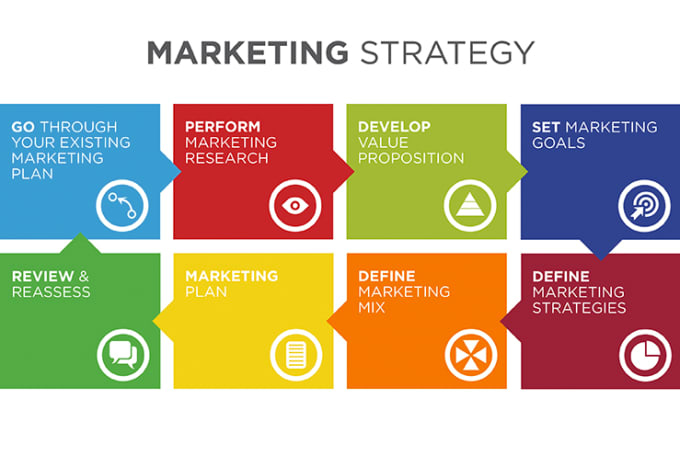4 Essentials for Building a Great Nonprofit Website
While your social media, email channels, print ads, television spots, and so on all play a role in your nonprofit's presence, they are simply inferior to your website.
Your nonprofit's website is the nucleus at the heart of your strategy. As such, time and effort must be spent to ensure it meets your audience’s needs and reflects business goals.
With that in mind, read on for four essentials that a great nonprofit website needs to have.
|
Purplepass offers a discount for nonprofits! If you're a nonprofit looking to manage |
#1 Craft a diverse and goal-driven content strategy
Content marketing is essential for virtually every brand or business today, and nonprofits are no exception. Strategies generate leads, convey nonprofit value, boost SEO, and more.
Consequently, it’s something worth investing resources in before launching your business.
 Each piece of content should have a different goal geared to different elements of your organization.
Each piece of content should have a different goal geared to different elements of your organization.
These should align with your unique KPIs. But as an example, if one of your goals is to increase donations during a certain period, you could present a video narrative exploring one of your nonprofit’s beneficiaries. Outline who they are, why they needed your nonprofit, how you helped them, and so on.
Social Media
Rather than letting your content sit on your website, cascade it across your social, email, and other marketing channels. An active approach to content promotion increases its value, and it’s often easy to do at scale with an integrated automation tool.
Demonstrate variety in content
When creating your content strategy, remember that diversity is key. Relying solely on written blogs to support your content marketing efforts will only take you so far. Audiences want variety and diversity, and that relates as much to the type of content as it does to what it’s actually about.
- Blogs
- Press Release
- Webinars
- Podcasts
- White papers
- Reports
- Guides and ebooks
- Testimonies
- Donations that made a difference
- Vlogging/video content
#2 Create defined pages that convey your value
There are some essential pages that every website needs: homepage, about page, contact, and so on. But for nonprofits, the importance of these pages varies, and it extends to other crucial pages as well.
Let’s start with your home page. This is often the first port of call for prospective donors or campaign partners when assessing your nonprofit, so it’s important to ensure they hit the mark.
Storytelling plays a big role here.
Weave a narrative around your nonprofit, how it helps the communities it works with, and so on. Strive for an emotive slant that emphasizes the human elements of your mission. This is what engages audiences and makes them care about your nonprofit's work; you show them how their help can make a difference.
What to include on your homepage:
- Multiple CTAs; "Learn More", "Donate Now", "Contact Us"
- Your event logo
- Social media links
- Captivating images that represent your mission
- Your tagline that summarizes your mission in just a few sentences
- Easy navigation system to different pages
- A color scheme and font that is with brand
Beyond your home and about pages, you should also build out your current campaigns/previous work page. What your about page advertises, your campaign page sells. It demonstrates the proof behind the promise, showing donors and potential collaborators alike the kind of great work you do.
Opt for concise but media-rich narratives that outline your previous work.
Boots-on-the-ground accounts from staff or beneficiaries, videos of frontline work being performed, and so on — these all go a long way towards strengthening your non-profit and increasing engagement into the bargain.
#3 Strive for diverse and high-quality visual content
I touched on this earlier in terms of media but it’s worth elaborating on — visual content is essential for nonprofits. Even the most well-written copy only goes some way towards engaging audiences and convincing them of your value.
Embrace visual content throughout your website that embellishes your brand.
Photos, images, videos, even infographics — these all go a long way towards bolstering your message. Beyond that, it helps people understand the emotion and meaning behind what you do.
Strive for a blend of visual content.
Obviously, original high-quality photography is a must. But for smaller nonprofits on tighter budgets, it’s worth leaning on free resources. It’s entirely possible to source good-quality photos for free online.
Indeed, they can even be used to complement your original photography where necessary.
Personalized graphics
Beyond photos, consider creating your own graphics too. There are myriad free or affordable tools available online that let you create unique infographics, avatars, banners, and so on.
This also lets you create slick graphics that match your non-profit branding too — essential for standing out and sticking in prospective donors’ minds.
Free graphic-building tools:
- Canva
- Crello
- Venngage
- Snappa
#4 Display trust signals on your homepage
It’s essential that your nonprofit is depicted as genuine and trustworthy to your audience. While this is true for any website, it is particularly resonant for nonprofits.
Trust is what fosters donations, supports engagement with your message, and encourages your audience to share that message.
Unfortunately, there are plenty of unscrupulous people out there looking to imitate charities and nonprofits for profits, and it’s essential that you tale steps to help audiences trust you.

Social proof is a good place to start.
Prominently display quotes from beneficiaries, donors, partners, and other relevant sources on your homepage. This backs up your value as an active and honest non-profit, and displaying it on your homepage makes it clear and obvious from the start.
*** There are plenty of ways to earn a badge or award for your website. A good place to start is with Great Nonprofits. Earn your Top-Rated Badge and get listed as a trusted nonprofit. "Did you know that 7 out of 10 people say that the presence of a rating badge increases their likelihood of giving to a nonprofit?" - Great Nonprofits.
Display quotes and media mentions
You should also prominently display any media mentions on your homepage too.
Even simple clickable logos of industry or news publications in which you’ve been featured are enough to help people understand that you are a reputable and trusted nonprofit within your wider community.
Create a page on Trustpilot
Finally, set up a page for your nonprofit on Trustpilot. This is often the first place people will go to check the veracity of a business, charity, or nonprofit, so it’s essential to get there first.
The features above are just a few essentials that a great nonprofit website needs in 2020. It’s worth spending the time and effort finessing your website, especially during these uncertain times.
No one knows what the future holds, both for nonprofits themselves and their beneficiaries. As such, it’s important to strive for value on your website while you have the time and push for your donation goals for 2020.
|
Purplepass is waiving donation service fees LIMITED TIME OFFER! Due to COVID-19, |
Article by MicroStartups
MicroStartups is your online destination for everything small business related.
We’re dedicated to spreading the word about hard-working solopreneurs and SMEs making waves in the business world. Visit the blog for your latest dose of startup, entrepreneur, and charity insights from top experts around the globe @getmicrostarted.







